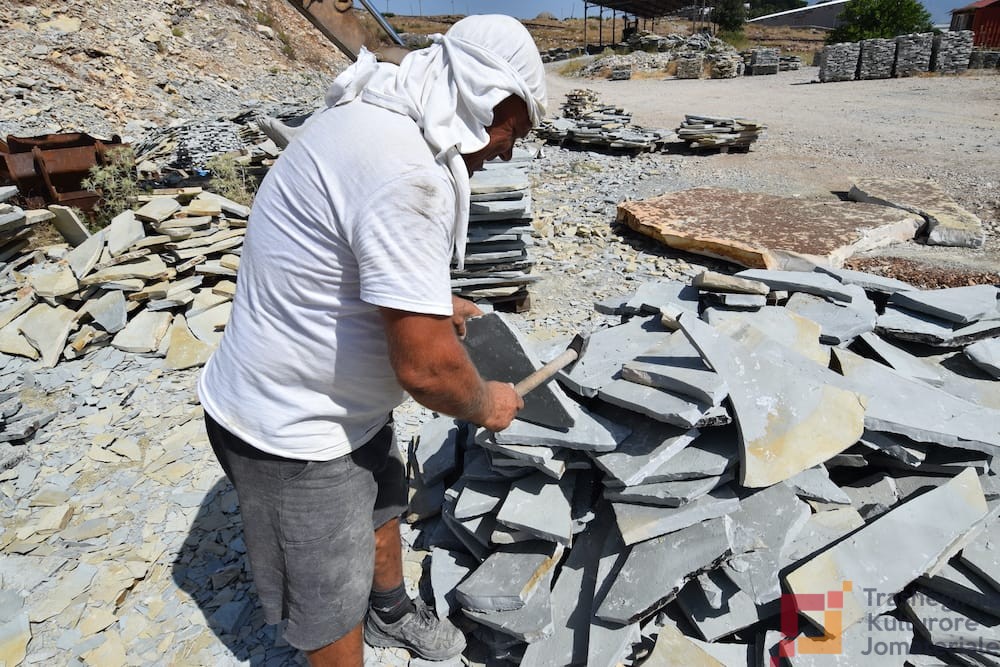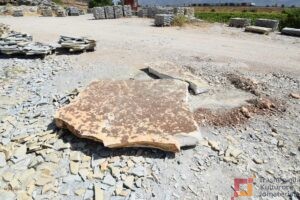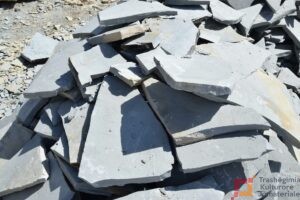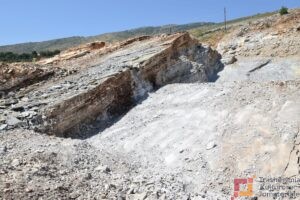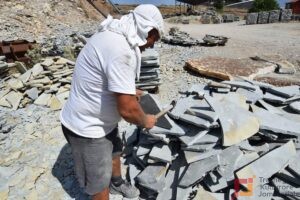The word “madem” (stone pit or quarry) is frequently encountered in daily discourse in Gjirokastra. Among such expressions, the following are mentioned: “stone quarry”, “gold quarry”, “copper quarry”, the deep “recesses” of human consciousness and unconsciousness, “recesses” of human values, “recesses” of love, etc.
Stone craftsmen or stonemasons are the craftsmen who extract stone slates from the ground. The stone craftsmen using several work tools such as: spalling hammer, stone drill bit, pitching chisel, crowbar, pick axe, horseshoe shim, mines/explosives, crossbow as well as other work tools and instruments, have for centuries stripped stones off the mountain for cobblestones, walls, roofs, sills and frames, staircases, eaves, washstand, hammams, sofa plinth bases, chimneys, washbowls, and courtyards of Gjirokastra.
The existence of the “stone city” of Gjirokastra, declared a “world cultural heritage” (UNESCO site), which resembles a gigantic stone “kneading trough”, is primarily related to the “stone quarries” and the stone craftsmen’s work applying ancient traditional techniques and instruments, extract stone slates from the boulder stones of ‘Mali i Gjerë’ as raw material for building everything made of stone in Gjirokastra.
Extract from the article “Lezo Makriu, wood craftsmen of Dunavat written by Zija Basha. The “Stone City”, as Gjirokastra is called, from far away, up close and amidst it, is so startling as one wonders: “How was erected this whole stone city and its gem, the legendary castle?! Where was this abundance of stone, which gave rise to such gorgeous stone buildings skillfully crafted by the masters’ hands, making one unable to choose between?! Still, this glamorous city was built over years and centuries with stones grabbed deep down the earth where for millions of geological time years had been asleep, by other craftsmen, who disrupted their “comfort”, split them into slabs, lids, and wall stones and cobblestone alleyways. They were the masters of madem (quarries). When I was small, I saw in my village how the wall was made with and without mortar, by Master Dhoska, Skender Kallfe, Peçi Koçollari, Simi Llukani, Korca Master Thanas Gjoka, and other people from Gjirokastra; Kico Zhdavo, Kristo Qiriako, Pilo Rajdho, the talented Priest ‘Papa Mihali i Dakove’, all from Dervician. But this article speaks about the master of stone extraction, namely the Gjirokastra stonemason Lezo Makriu.

